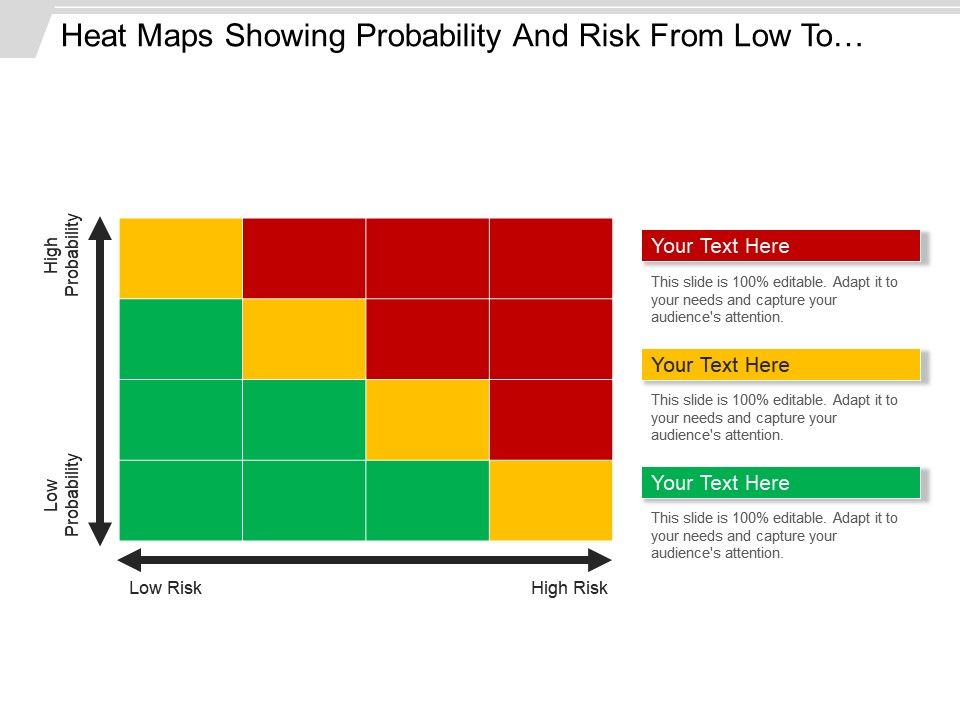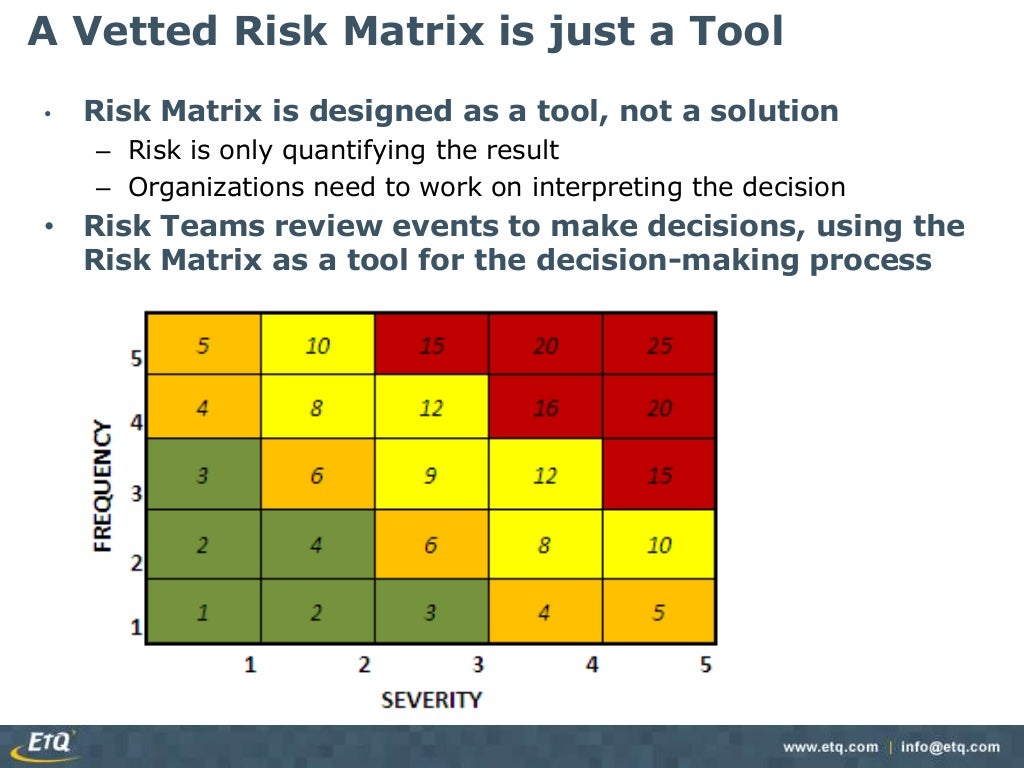
Of course, you can lay it out in any way that you choose as long as you’re following those general guidelines that will help you the most during the qualitative analysis of the risks of your project.Īnd that is the Probability and Impact Matrix for reviewing Risk. In other words, the modern definition of risk recognizes that risk is not only about threats, but about opportunities as well.
#Risk probability examples iso#
And that’s the way that they’re prioritizing in this particular probability and impact matrix. The older definition of risk in ISO was a chance or probability of loss, while the latest ISO 31000:2009 defines risk as the effect of uncertainty on objectives.

And then the impact as a negative impact for threats, or a positive impact for opportunities, and those are multiplied together to give us the outcome.Īs you can see, we’ve got the high impact and high probability up in the top right, and low impact and low probability in the bottom left. So we’ve got very low and very high, or 0.1 to 0.9. As you can see, we’ve got the probability on one side, and its actually given descriptive terms and numbers just so you can see the difference. Here’s an example of a probability of impact Matrix. The reason we use numbers is if numbers are used they can be multiplied to give a probability impact score for each risk, and that’s a great way to prioritize those risks. Or more common is numeric values, where a 5 might be a high, and a 1 might be a low for example. And things like descriptive terms could be used if you want to – so it might have a “high impact”, medium, low, very low. So first of all, both opportunities and threats are rated, so we do want to find the strengths and our weaknesses of our project. So is it a high priority? Is there a high probability and a high impact? Then we probably want to be focusing on that, and the low ones we can maybe leave for later. And what’s the impact if that actually happens? Is it high, is it low? By giving it a rating, it allows project risks to be allocated into priority groups. We ask, “What is the probability of it happening?” Maybe it’s 70 percent for example. It’s a grid for mapping the probability of each risk occurrence, and its impact on your project objectives if that risk occurs. What is a Probability and Impact Matrix? Well, it’s part of your qualitative risk analysis.


– See All Project Management Key Concepts –


 0 kommentar(er)
0 kommentar(er)
